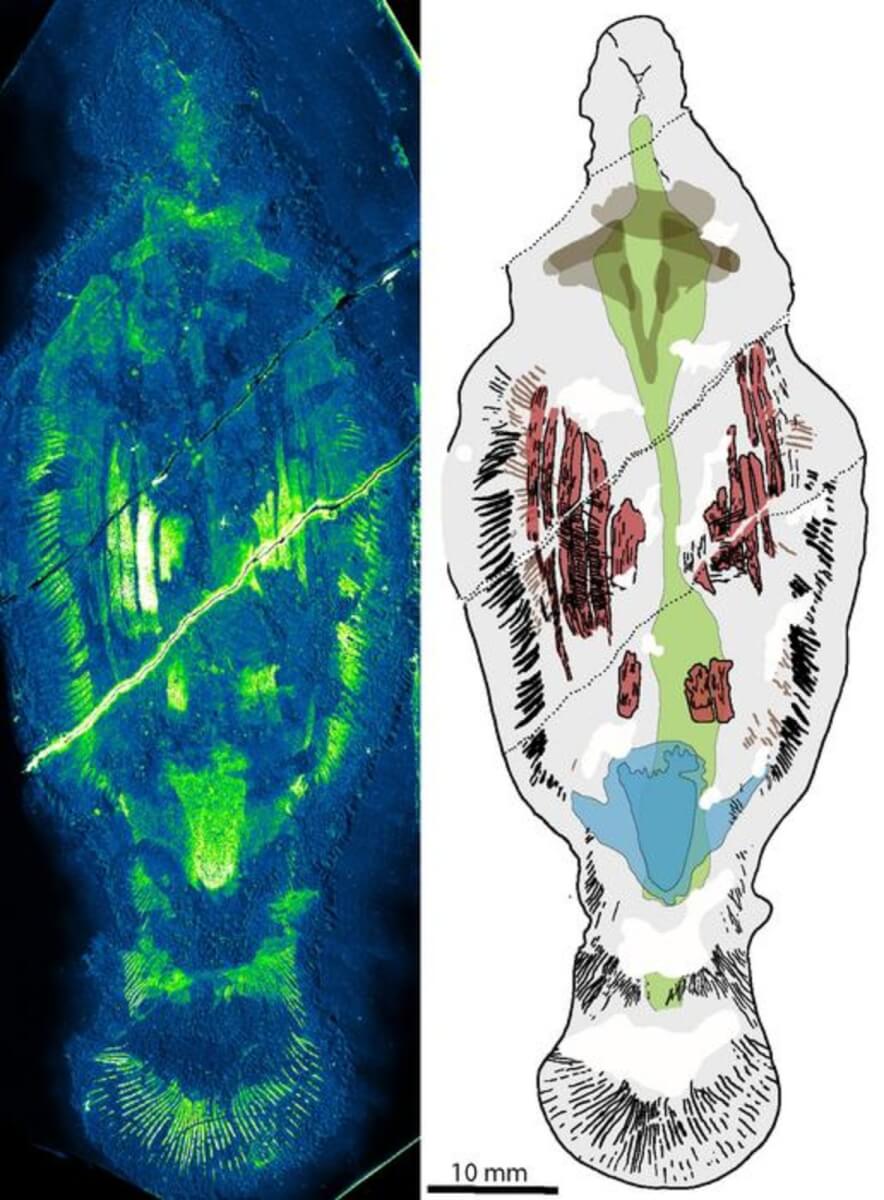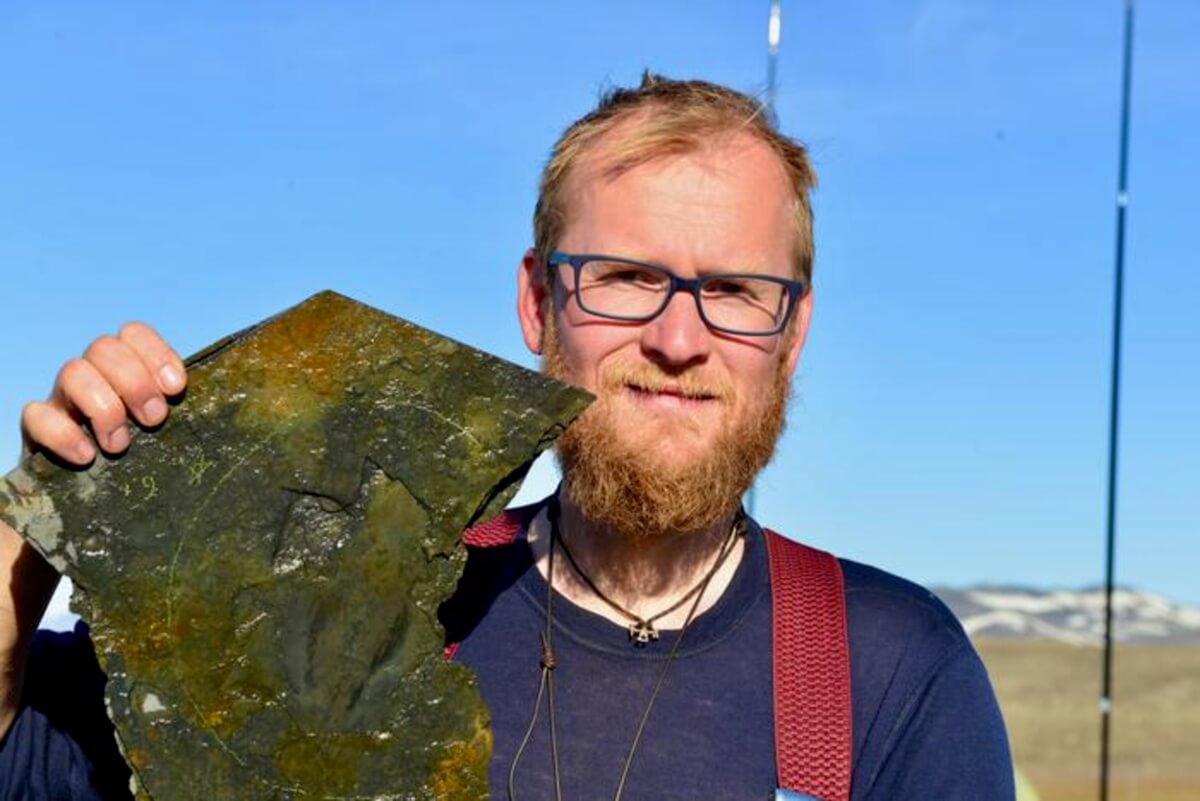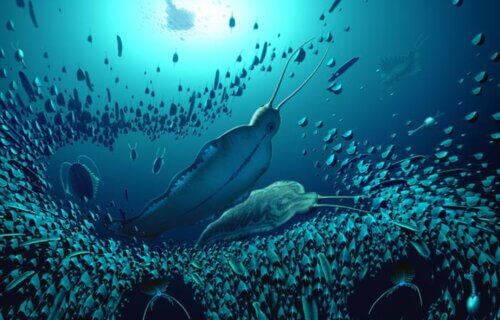🔑 Key Findings:
- Giant worms called Timorebestia were foot-long predators in ancient oceans
- Their name literally translates to “terror beasts”
- Predatory worms may have dominated the water for up to 15 million years
BRISTOL, United Kingdom — Jaws has some creepy, prehistoric competition. Scientists have discovered a new group of animal predators in North Greenland’s Early Cambrian Sirius Passet fossil site — giant worms which dominated the world’s oceans a half-billion years ago. Named Timorebestia, these “terror beasts” suggest the existence of an ancient dynasty of predators over 518 million years ago, challenging previous beliefs about the dominant carnivores of that era.
Timorebestia, measuring more than 30 centimeters in length and considered giants of their time, featured distinct characteristics such as fins along their bodies, a notable head with long antennae, and massive jaw structures. These creatures represent some of the largest swimming animals of the Early Cambrian period.
“We have previously known that primitive arthropods were the dominant predators during the Cambrian, such as the bizarre-looking anomalocaridids,” says study senior author Dr. Jakob Vinther, from the University of Bristol’s Schools of Earth Sciences and Biological Sciences, in a university release. “However, Timorebestia is a distant, but close, relative of living arrow worms, or chaetognaths. These are much smaller ocean predators today that feed on tiny zooplankton.”

Researchers found that these early ocean ecosystems were complex, with a food chain supporting multiple predator tiers. Timorebestia, akin to modern top carnivores like sharks and seals, likely occupied a high position in the Cambrian food chain.
In the fossilized digestive system of Timorebestia, researchers discovered the remains of a common swimming arthropod, Isoxys.
“We can see these arthropods was a food source for many other animals,” notes study author Morten Lunde Nielsen, a former PhD student at the University of Bristol. “They are very common at Sirius Passet and had long protective spines, pointing both forwards and backwards. However, they clearly didn’t completely succeed in avoiding that fate, because Timorebestia munched on them in great quantities.”
Arrow worms are among the oldest Cambrian animal fossils, with a history extending back at least 538 million years. The study suggests that swimming predators like Timorebestia and arrow worms might have dominated the oceans before the rise of arthropods, possibly ruling for about 10 to 15 million years.
“Timorebestia is a really significant find for understanding where these jawed predators came from,” explains study author Luke Parry from Oxford University. “Today, arrow worms have menacing bristles on the outside of their heads for catching prey, whereas Timorebestia has jaws inside its head. This is what we see in microscopic jaw worms today — organisms that arrow worms shared an ancestor with over half a billion years ago. Timorebestia and other fossils like it provide links between closely related organisms that today look very different.”

“Living arrow worms have a distinct nervous center on their belly, called a ventral ganglion. It is entirely unique to these animals,” notes Tae Yoon Park from the Korean Polar Research Institute, the study’s co-senior author and field expedition leader.
“We have found this preserved in Timorebestia and another fossil called Amiskwia. People have debated whether or not Amiskwia was closely related to arrow worms, as part of their evolutionary stem lineage. The preservation of these unique ventral ganglia gives us a great deal more confidence in this hypothesis.”
The discovery in Sirius Passet, one of the most remote regions of North Greenland, provides exceptional preservation that reveals detailed anatomical features, including digestive systems, muscle anatomy, and nervous systems.
“We have many more exciting findings to share in the coming years that will help show how the earliest animal ecosystems looked like and evolved,” concludes Dr. Park.
The study is published in the journal Science Advances.
You might also be interested in:
- Climate change in prehistoric times gave our ancestors bigger brains, study explains
- Geologists have discovered humanity’s earliest ancestor, and it’s a worm
- 200 million years later, researchers discover parasites in an ancient predator’s fossilized poop

518 million years? Pure Hogwash. Nice fairytale though.🤣🤣
Pre-Flood fauna, on an earth which supported ENORMOUS sized animals and humans DUE TO an abundance of food and O2 in a VERY DIFFERENT earth environment. EVERYTHING CHANGED, DOWN TO the spin of the electrons in an atom, EVERY SINGLE atom, (that’s a LOT) even the universal “ph” (electrically based) and gravimetries, changed, post flood, and EVERY LIVING THING “devolved” to what we see today, due to a DRASTIC change even in Einstein’s “C”…hint: it NO LONGER “is”….
Things like Petra, Ba’albek, are a “giant” clue….and Al Naslaa is a GIANT petrified pile of poo….
Be Prepared.
This time isn’t called the “apocalypse of the Revelations” (the revealing) for nothing.